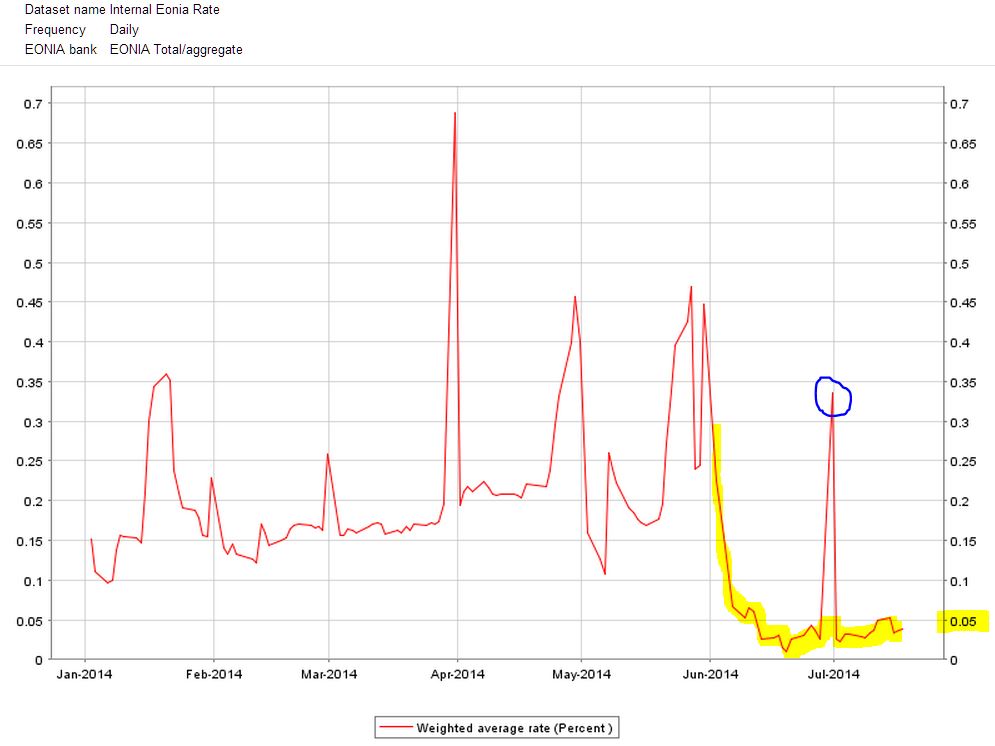The move of the ECB on June 5 was primarily aimed at restoring conditions of low and stable money market rates.
It was not difficult to predict (as I did here six weeks ago) the direct consequences of the new official rates and, notably, of the prolongation of fixed rate, full allotment tender procedures, and of the decision to suspend the weekly fine-tuning operation sterilising the liquidity injected under the Securities Markets Programme.
Except for the end-of-June spike, money market rates appear more stable and lower.
